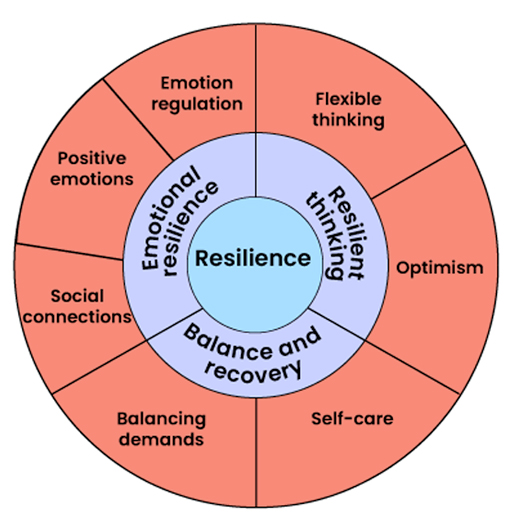1 Barriers and enablers to learner wellbeing as well as the consequences of resilience and stress
What is really meant by ‘wellbeing’? If you think back to Week 1, defining wellbeing was the first activity that you were asked to complete. In Week 1 you were also introduced to how displayed emotions can be an indicator of mental health status. Similarly, personal wellbeing, rather than being defined by a set of rules or requirements, is impacted by emotions in response to different situations. To help you explore how emotions are associated with wellbeing, you may find looking at the Warwick and Edinburgh Wellbeing Scale a useful guide. It is also important to note that wellbeing, and more specifically poor wellbeing, is not the same as experiencing a mental health condition. While the two might hold a relationship with each other, someone diagnosed with a mental health condition can experience positive wellbeing.
Resilience is different to wellbeing, but the two are linked and can impact each other. There are various definitions of ‘resilience’, and many include the themes of overcoming some form of adversity and ensuring that the emotional strain of a particular situation does not result in long-lasting detrimental effects on the individual. Neither of these resilient outcomes are surprising as ‘resilio’ is a Latin word meaning ‘rebound’ or ‘spring back’. Resilience can help someone to manage the practical, as well as emotional, challenges of a situation (Herrman et al., 2011) and is eloquently explained in the American Psychological Association (2022) definition: ‘the process and outcome of successfully adapting to difficult or challenging life experiences, especially through mental, emotional, and behavioural flexibility and adjustment to external and internal demands.’
Resilience is dynamic and can change over time and in response to different situations (Connor and Davidson, 2003). To help explain how resilience can be developed and strengthened, the resilience skills model below, based on a resource produced by Baker et al. (2021), identifies key components of resilience and provides structure and guidance on how to promote and maintain resilience skills over time. You may identify with some of these as you progress through this week’s content.

Stress, defined by the charity Anxiety UK (2023) as ‘the feelings that people experience when the demands made on them are greater than their ability to cope’, is another factor that impacts both resilience and wellbeing. Herrman et al. (2011) have shown that exposure to frequent, or prolonged, stress is a significant risk factor that reduces the ability to maintain resilience and mental health. This is therefore also an important consideration for educators: What influence do you have over learners’ stressors? How can you boost learners’ ability to perceive that they can cope? As you progress through this week you will see that even stressors related to your choice of assessment process, or how you provide feedback, can affect your learners’ wellbeing and resilience.
Learner stress can also be experienced, or exacerbated, when factors such as gender identity, or other protected characteristics, are not understood and respected. It is therefore essential to be mindful of your actions, words and behaviours, as well as those of other learners, and of the learning environment to prevent eroding an individual learner’s wellbeing.
